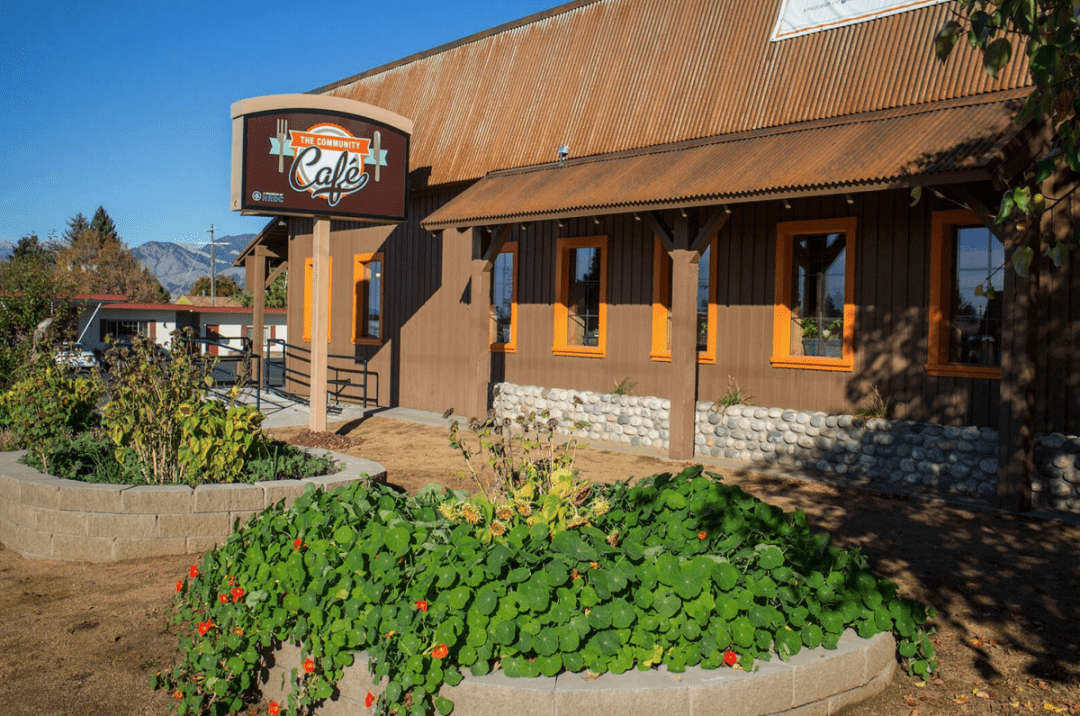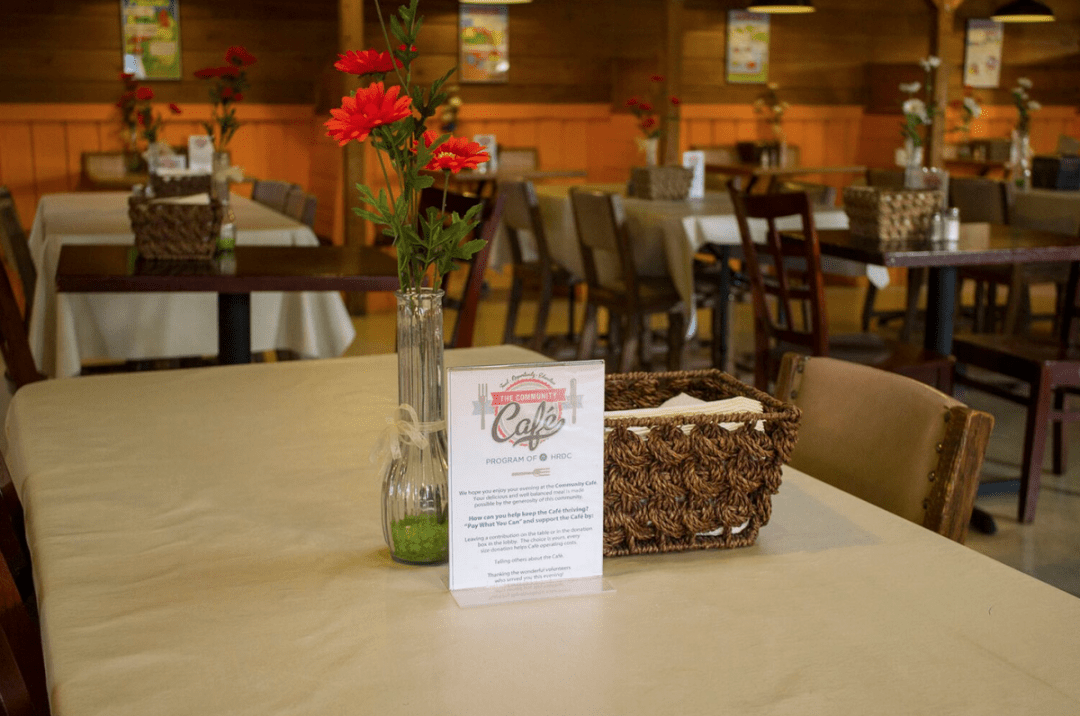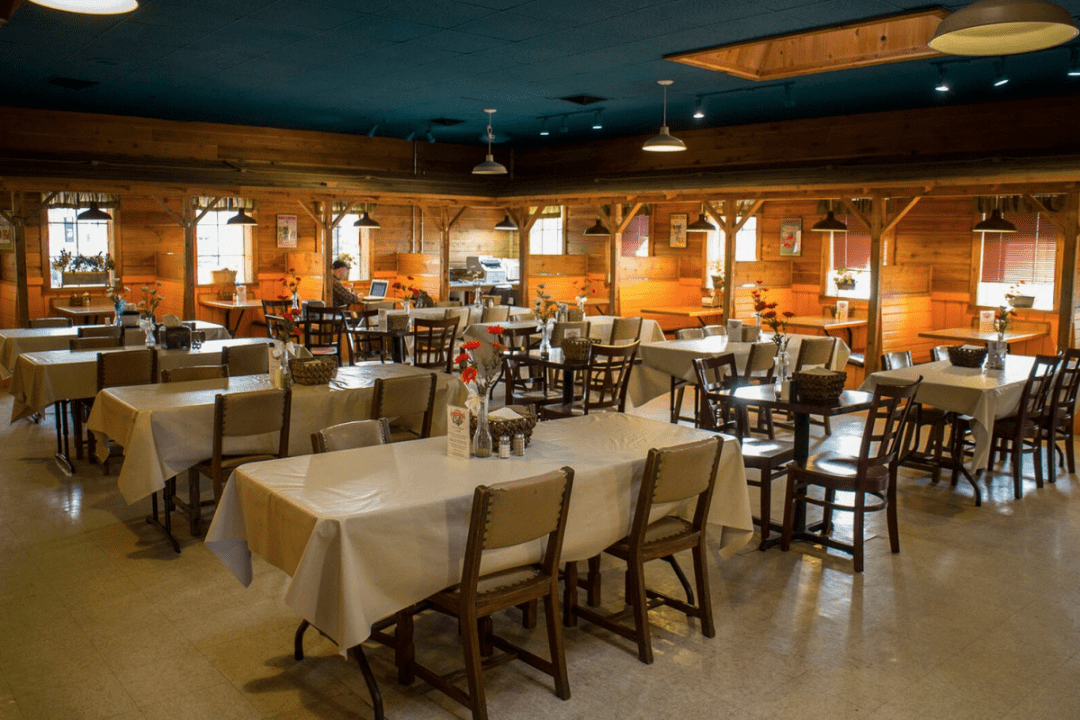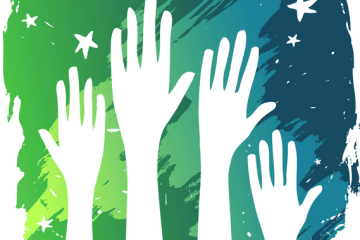Putting the Community into Café
photos by Zach Hoffman, by Kate Emmerich
It is difficult, and well near impossible, to find a dining establishment that is open every evening, is centrally located, and caters to all ages and incomes. The Community Café of Bozeman is a unique “restaurant style dinner service, available to anyone who eats regardless of their ability to contribute.” This “pay what you can model” has enabled the café to prepare and serve close to 100,000 meals since they opened their doors in March 2012.

The Community Café’s initiative is made possible through a “broad based community partnership” organized by the Human Resource Development Council, or HRDC. The café is one branch of the HRDC’s Emergency Food and Nutrition Initiative, “striving to improve food security throughout the Gallatin Valley.” Other HRDC program initiatives include: The Gallatin Valley Food Bank, Headwaters Area Food Bank, Big Sky Community Food Bank, Senior Groceries, Healthy Kids Pack and the Kids Summer Lunch Program. These culinary programs, as well as Café Catering, provide senior citizens, children, families, single parents, and essentially anyone who wants to enjoy a good meal, with the opportunity to access healthy, affordable food options within their community.
Food. Opportunity. Education.
These three tenants are the driving force behind The Community Café’s vision. Healthy, well prepared food is served in a restaurant setting, which contributes to a warm and inviting atmosphere. I contacted Megan Shaver, Program Assistant at the café, to set up a visit. She was more than willing to let me sit down with her, and several other employees, including Lyria, Childhood Nutrition Program Coordinator, and Elizabeth, former Peace Corps Volunteer, soon to be Program Assistant, at the café to discuss volunteer opportunities, program development, and most importantly, community building. Megan emphasized that the café is a place where resources (food, space, community building) operate in a space where they can be used as efficiently as possible.
All food donations come from The Gallatin Valley Food Bank, another branch of the HRDC. Depending on what donations they receive, the weekly menu is crafted. The Community Café is spacious, but warm, with wood details and comfortable seating for small and larger groups. Although I was there during the daytime hours, volunteers and employees came in and out, preparing for dinner service. The weekly menu is clearly posted on their website, and tonight’s meal sounded especially warm and delicious given the damp and chilly weather: baked cabbage and elk served with fresh fruit, garden salad, warm rolls and sweet potato soup. Paul is the lead, and only, chef, and he serves at the helm of the kitchen on a nightly basis. Café employees were proud to note that The Community Café has never missed serving a nightly meal since the organization was founded.

The Community Café promotes educational opportunities for students of all ages to hone their culinary skills. Rob, the café’s Vista volunteer and Culinary Arts and Workforce Training Program Coordinator, has made it a goal to move last year’s successful pilot program into a sustainable, streamlined component of The Community Café. Through their ‘apprenticeship’ at the café, students have the opportunity to gain real life culinary experience. They plan, prepare and serve evening meals with the assistance and mentorship of Rob and Paul. It is a concrete effort to extend educational opportunities beyond high school, and provide participants with an opportunity to gain meaningful culinary professional experience. Through a proven model, “community service through quality food service, sustainability through social enterprise and self- empowerment through job training,” this program recognizes that financial stability and self- sufficiency are only possible through gainful employment. Rob was proud and excited to remind me that the Workforce Training Program would be holding a graduation for their seven accomplished students, Thursday, October 29th, from 6:00-8:00 at the café. This graduation serves a dual purpose: to celebrate the achievements and dedication of its students, while raising funds to keep the program moving forward.
As a relative newcomer to Bozeman, The Community Café clearly stands out as a bright and progressive program in our city. Their mission is comprehensive and sustainable; they have short term goals (provide healthy food options and access to all people, regardless of income), which contribute to their long-term vision (provide community members opportunities to access education in an effort to promote long-term employment). According to the United States Census Bureau, recent data confirms what many of us have already recognized: Bozeman is growing rapidly, and affordable housing and gainful employment are valid concerns of citizens in our community. There are an estimated 41,660 residents in Bozeman. 20.5% of citizens are under the age of 18. They are the future college students, teachers, employees, business owners and residents of our community. While Bozeman is booming, it is still a small town at heart—a community known and respected for taking care of its own, particularly in the light of increased costs of living. The Community Café is one of many responses to address affordable living solutions. When the median house price within the city is $339,000 and the median household income is $52, 833, and the rate of persons living below the poverty rate has increased to 21.2% (2009-2013 census bureau data), we must continue to be creative in our academic and professional solutions in order to best prepare our young citizens to not only survive, but thrive and make a difference in our community.

Fortunately for us, The Community Café has multiple ways and opportunities for community members to get involved. Their website is colorful, informative, and easily accessible. Once you have read about the various programs and volunteer opportunities, including kitchen prep, serving, food packaging and preparation, delivery and drop off opportunities, you can fill out a contact form. The form gives the café a chance to consider your personal interests and availability to best match you with a volunteer opportunity. There only several full time employees, which means a majority of responsibility must be shared between part time employees and volunteers. 7-9 people are needed nightly to assist with food preparation and service. 6-8 people assist with daily operations, food preparation and delivery. The summertime lunch program provides meals to children in 11 different locations around the city.
The Community Café reminds us they cannot do this alone—and volunteerism does not have to be a solitary experience. Megan reiterated that families can always sign up to volunteer together. For example, with your kids in the car, you can deliver and serve an evening meal together at Whittier School, or assist with the LaMott School lunch drop off and pick up. High school athletic teams, church groups, college classes, or friends are encouraged to sign up, prepare and serve a meal together; this clearly speaks to their goal: communities building community. If you have limited free time, The Community Café keeps an ongoing “Wish List”, ranging from canned good needs to kitchen utensil requests. Monetary donations can also be directly made to The Community Café. Finally, as reiterated by all of the staff and volunteers, one of the most important ways to support the café is to actually access it--come in, sit down, have a meal and pay what you can to help support the unique vision and practical needs this café provides our community. The Community Café, located on 302 North 7th Avenue, is open nightly, and serves an evening meal from 5-7 pm.



